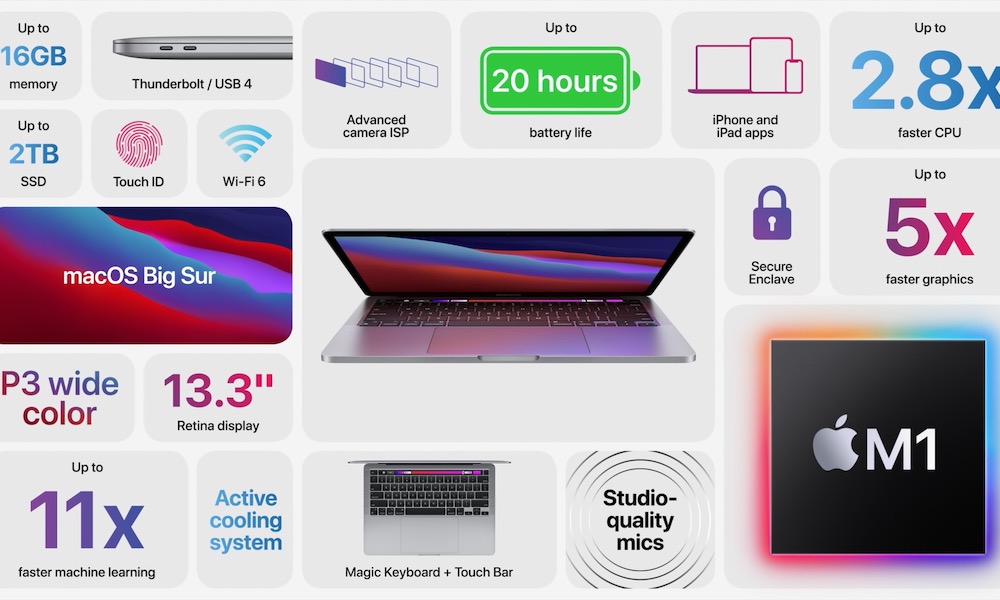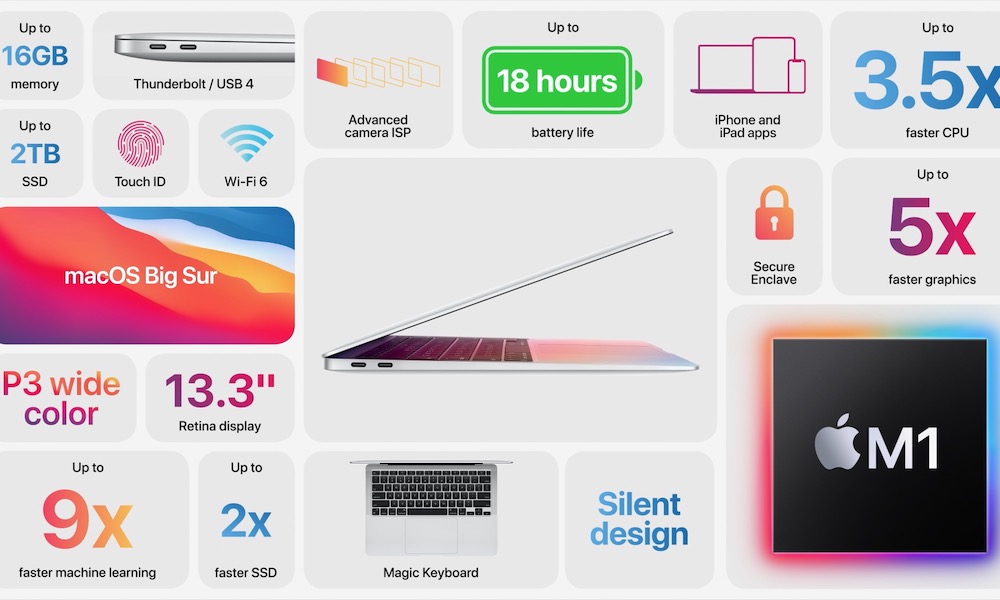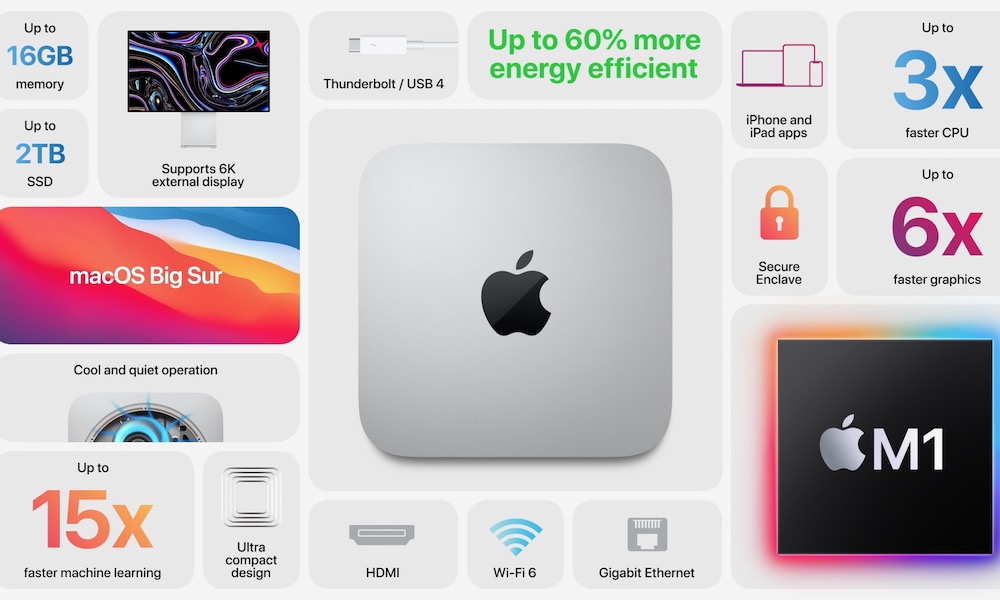Are Apple’s New M1 Macs Any Good? Here’s What Reviewers Have to Say
 Credit: Girts Ragelis / Shutterstock
Credit: Girts Ragelis / Shutterstock
Toggle Dark Mode
Apple recently unveiled its new lineup of ARM-based Macs powered by the company’s innovative M1 processor.
Apple unveiled not one, not two, but three new M1 computers, including a 13-inch MacBook Air, a 13-inch MacBook Pro, and a Mac mini.
But, how do these cutting-edge Macs perform when compared to their Intel counterparts?
We combed through all of the early reviews to determine if Apple’s new M1 chip and Mac hardware live up to the hype. Read on to learn more.
MacBook Pro (M1, Late 2020)
The MacBook Pro is the powerhouse of Apple’s notebook line, so there was a lot of uncertainty about the M1 chipset and if it would be powerful enough to handle professional-level processes.
The good news is the processor performance more than equals the Intel chips, but it outperforms them.
Across the board, the reviewers extolled the performance of the M1 MacBook and its outstanding battery life.
Minor gripes include the lack of a touchscreen, the inclusion of only two USB-C ports, and the 16GB RAM limitation imposed by the M1 chipset.
“Apple’s M1 offers tantalizing improvements to computing performance, graphics output, and battery life,” writes Tom Brant
for PC Mag.
“Apple’s new M1 powered MacBook shows impressive performance gains that make Intel’s chips obsolete overnight,” writes Matthew Panzarino for TechCrunch.
“Performance in both native apps, and while also using legacy apps made for Intel-based MacBooks, was seriously impressive, and the overall performance of the Apple MacBook Pro 13-inch (M1, 2020) sort of blew us away. If you were worried that by ditching Intel, Apple’s MacBooks would suffer when it comes to performance, it’s clear that this is not the case,” writes Matt Hanson for TechRadar.
“Apple has bold claims for M1 battery life improvements — up to twice the battery life of the Intel models — and while I didn’t see that, I did easily get 10 hours on a charge and had to really push things to drain the battery in eight hours,” writes Nilay Patel for The Verge.
“Apple states that the battery in the machine we tested will last up to 20 hours playing video. We didn’t get 20 hours, but we got darn close with almost 18 hours. The other two 13-inch (Intel) laptops we tested lasted 10 hours. In the past, we’d gladly take whatever we can get when it comes to battery improvements with the MacBook Pro, usually an extra hour or two. But to see this much improvement, well… it’s sort of mind-boggling,” writes Roman Loyola for MacWorld.
MacBook Air (M1, Late 2020)
The MacBook Pro may be the top dog in Apple’s notebook lineup, but the MacBook Air is everyone’s’ darling. As much as reviewers praised the MacBook Pro, they absolutely loved the MacBook Air. It is nearly as fast as the Pro model and also features a long battery life. Though it closely matches the M1 MacBook Pro in performance, the Air still keeps its ultraportable form factor and lower price tag. Cheaper, smaller, and nearly as fast — what more could you want?
“The MacBook Pro and Mac mini, of course, benefit from this improved performance, and will continue to do so as the platform develops, but the MacBook Air is the one truly moving up a tier in performance capability. It’s also fanless, unlike the MacBook Pro and Mac mini. This helps it stay completely quiet and extra thin, but it clearly is not holding the performance back too much,” writes Matthew Buzzi & Tom Brant for PC Mag.
“My first thought while using the M1-powered MacBook Air, surprisingly enough, was that it felt like an iPad Pro. It’s shockingly responsive, as if it’s awaiting your next command like an over-eager puppy,” writes Devindra Hardawar for Engadget.
“The MacBook Air with the new M1 processor so absolutely and thoroughly trounces the Intel version released earlier this year (with Intel’s “Ice Lake” Y-series CPU/GPU) that it defies belief. Unfortunately, Apple changed practically nothing else about the MacBook Air. This new model is exclusively a processor swap. But what a processor!” writes Roman Loyola for MacWorld.
“In our early tests we’ve been very impressed with the MacBook Air’s battery life – even after a few hours of work (and web browsing), the battery only dropped a few percentage points, and even if you leave it on standby for a day and come back to it, the battery level remains high. We can’t imagine anyone having any complaints with the MacBook Air (M1, 2020)’s battery life,” writes Matt Hanson for TechRadar.
Mac mini (M1, Late 2020)
It’s been two years since Apple last updated the Mac mini, the company’s compact desktop. Similar to the MacBook Pro, the Mac mini runs fast, cool, and silent thanks to its whisper-quiet fan and new M1 chip. Apple, unfortunately, had to pare down some of the features to accommodate the M1 chipset. RAM is limited to 16GB. There also is no dual external monitor support or gigabit ethernet found in previous Mac mini models. Most reviewers were so wowed by the machine’s performance that these few missing features didn’t have much of an impact on their enthusiasm.
“In the course of testing, one big thing we noticed: Through all these benchmarks, pressing the CPU and GPU to their presumptive limits, the Mac mini was whisper quiet,” writes John Burek for PC Magazine. Burek adds, “And the chassis stays remarkably cool throughout. There was no point in external thermal testing because the chassis was barely warm to the touch, anywhere on the surface, even at peak activity. That’s impressive… For the money, it’s hard to find a compact desktop on any platform that outdoes it on performance potential, sheer elegance of hardware and software design, and user experience,” concludes Burek.
“Using the M1 Mac mini feels like using a new iPad or iPhone. Everything satisfyingly snaps into place. I keep waiting for my test machine to start lagging, and nearly a week later, it’s just as fast as the day I started using it. The new Mac mini is surprising, and most users will find it a major upgrade over existing Mac computers. It’s hard to beat regardless of the price,” writes Matt Burns for TechCrunch.
“Spending a few days with the 2020 Mac mini has shown me that it’s a barnburner of a miniature desktop PC. It outperforms most Intel Macs in several benchmarks, runs apps reliably, and offers a fantastic day-to-day experience whether you’re using it for web browsing and email or for creative editing and professional work,” writes Chris Welch for The Verge.
Rosetta is the key to Apple’s transition away from Intel processors and to its own silicon. According to reviewers, Apple nailed it, creating an emulator that runs non-native apps with a minimal hit on performance.
“We tried a mix of both new apps built for the M1 chip, as well as legacy apps built for Intel Macs, and running via Rosetta, and there was no noticeable difference in terms of performance. The fact that you can seamlessly run older apps on the new MacBook Air really is commendable,” writes Matt Hanson for TechRadar.
“But the real nut of it is that it has managed to make a chip so powerful that it can take the approximately 26% hit (see the following charts) in raw power to translate apps and still make them run just as fast if not faster than MacBooks with Intel processors,” writes Matthew Panzarino for TechCrunch.
“The good news is, every single app I tried ran absolutely fine with Rosetta2 emulation. You just download the app, run it, and it’s like nothing has changed. There can be a small delay when you first run some apps, but it’s smooth sailing after that,” writes Jason Cross for MacWorld.









